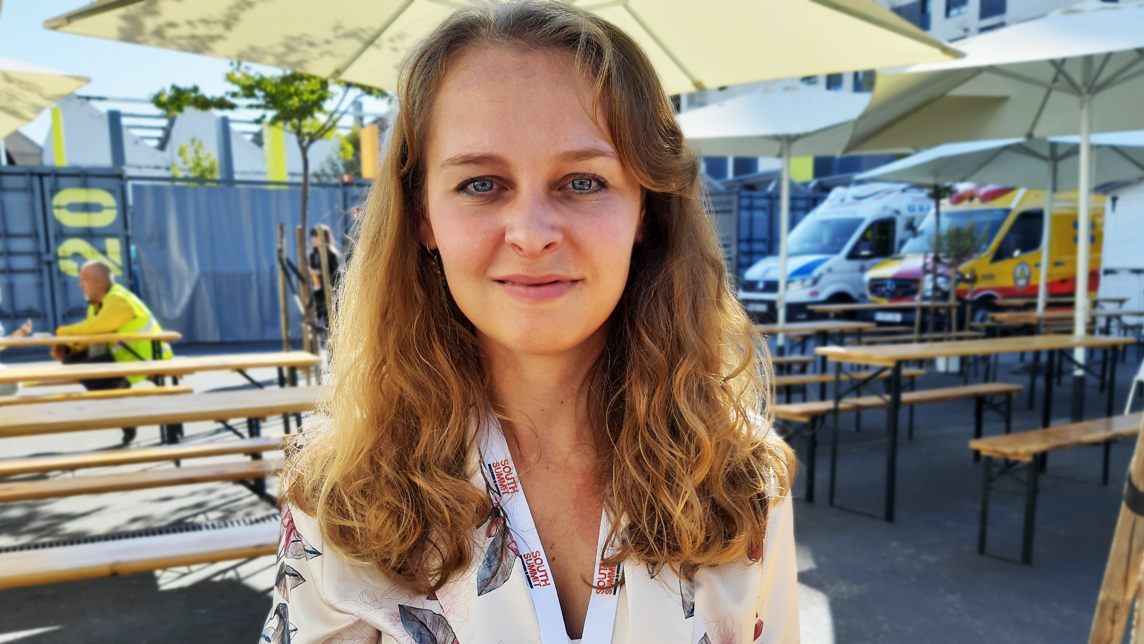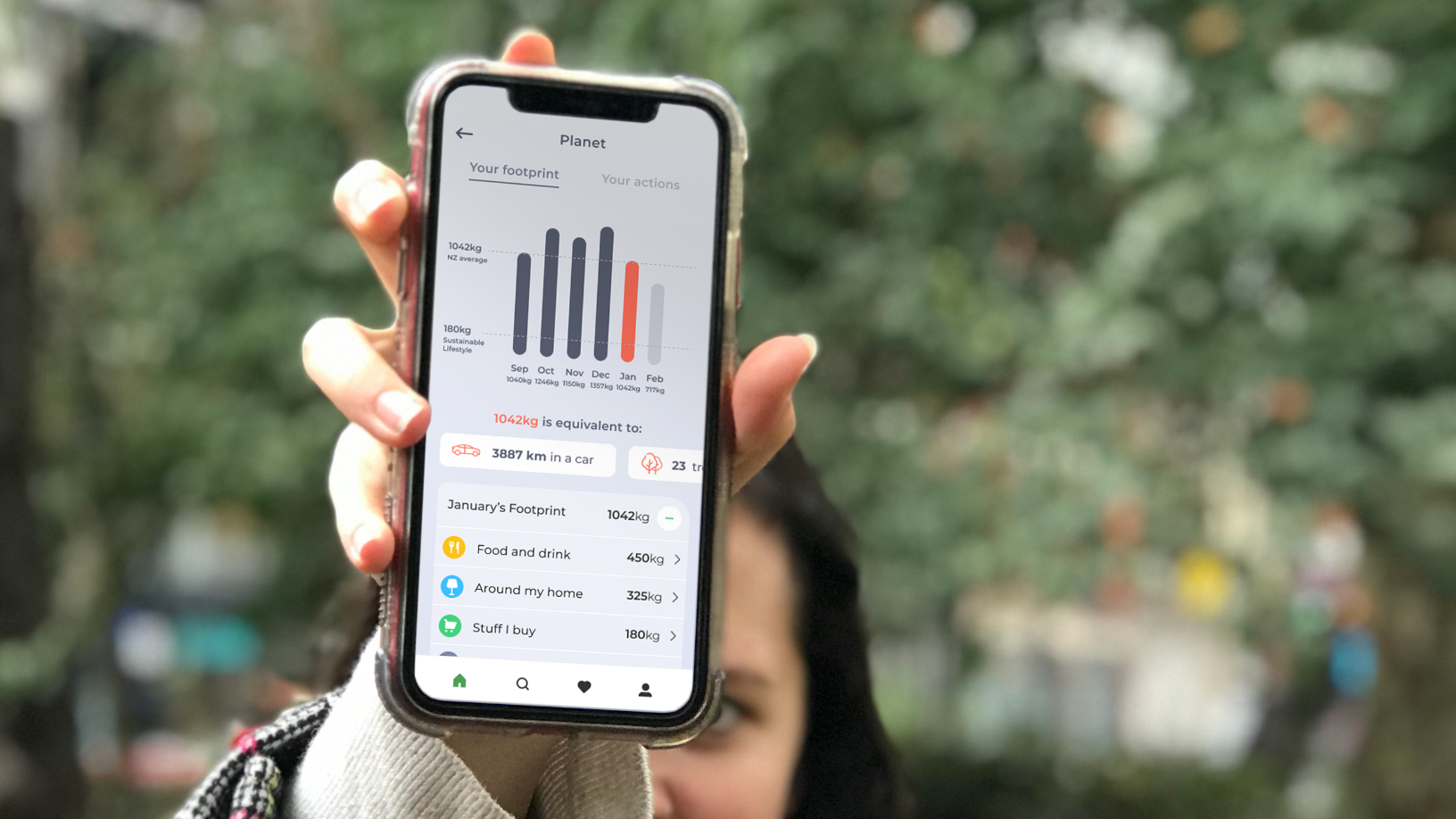It was while visiting London, one of the world's most popular tourist destinations, that Olga Plets got inspired to create a travel app: what if it was possible to do away with bulky audio guides and collate the official information for the world's tourist attractions in one app?
“We saw all these people with these bulky devices in one hand and the phone in the other trying to take photographs, so we thought if they already have their phone in their hands, then why not put all the information in there,” Plets, CEO and co-founder of travel startup CloudGuide, told CompassList at Madrid's recent South Summit.
“Everyone travels and most tourists go to museums, but when you do, you have these audio guide devices from the last century – super bulky, not fun, unhygienic that no-one likes. However, you still use them because you want to hear the story of the place."
Upon returning from London, Russian-born Plets and Spanish co-founder Cristina Pérez Ferrer, who had met while studying at Barcalona's international business school ESADE, began researching their idea. They found that most museums that embraced digitalization had developed their own branded apps.
“However, it's one app per tourist site so, as a user, every time you go to an attraction, you have to download another app that you just use once and then delete,” Plets said. “We wondered why there was not one application that unites all the tourism sites' information in just one site but with official content from each attraction.”
Museums, a tech-adverse sector
Plets and Pérez founded CloudGuide in mid-2013. The project produced an MVP at the International Create Challenge in Martigny, Switzerland, a three-week intensive acceleration program that selects just eight startups annually. CloudGuide's basic concept is to host a micro-site for each tourist attraction containing guided tours, images, entrance and travel information, and which is offered free or for a small user charge.
With museum visits growing in popularity, and international tourism in general increasing by 6% to 1.4bn tourist arrivals last year, CloudGuide looked like an opportunity waiting to happen.
But overcoming the museum sector's lack of digitalization was a major challenge for CloudGuide; the company took two years to attract the first 70 organizations to the app.
"It's a very traditional sector and technologically adverse. Some who already appreciated the value of digitalization had been put off because of previous bad experience,” Plets said. “It was a [time] when there were many platforms selling tickets and integrated ticketing solutions and some went bust.
"Museums that had bought into this were skeptical and wanted the assurance of a company that had been in the market for some time. That's why the first two years were so difficult."
Besides the cloud-hosted platform, CloudGuide incorporates Apple's Bluetooth iBeacon sensor and geolocation tool. Both cheap and easy to install, the iBeacon technology means visitors no longer have to scan QR codes or type numbers into a keypad because information is automatically transmitted through a signal.
“The problem inside many museums and historical buildings is that we cannot use GPS, so to help visitors find their way we use iBeacons, an extra interactive service,” Plets said.
CloudGuide supports any IoS beacon and the company can arrange installation where needed. Where there is mobile network coverage but no public Wi-Fi, CloudGuide has been boosted by the abolition of international roaming charges within the EU. Non-EU users can download guides ahead of time and view them offline.
Targeting global investors
CloudGuide received significant public investment from the Spanish Institute for Foreign Trade (ICEX) and Spain's Ministry of Education, Culture and Sport, with which it partnered to promote the app's use within public museums and libraries. The startup also received a grant from the EU innovation fund, Horizon 2020, but the company faced problems in sourcing local private financing.
“What most Spanish investors are looking for is a very well-tested model already proven in another market,” Plets said. “In our case, we didn't have any successful examples to refer to as the concept was quite new, so we were more successful with international investors”.
CloudGuide's early focus on international development helped it secure €900,000 in financing comprising seed monies from US-Swiss fund Alpana Ventures, international business angels including and ex-Google executive and a French travel executive, EU and state funding, and the crowdfunding platform Seedrs.
Over the coming months, CloudGuide will seek post-seed funding to enable it to scale across Europe, covering every tourist city on the continent.
CloudGuide has concentrated on markets from which it received the most interest: Spain, Austria and the UK. Further expansion came through geographical proximity, for example entering Germany from Austria, and France from Spain.
“Straight away we had pilots in different countries, we never focused exclusively on Spain so it helped us to see which markets were more responsive,” Plets said. By late 2014, CloudGuide secured pilots in eight museums in Spain, Belgium, Austria and Mexico, including Vienna's Thyssen-Bornemisza Art Contemporary, Brussels' Magritte Museum and Barcelona's European Museum of Modern Art (MEAM).
1,000 attractions and counting
A B2B platform, CloudGuide applies a SaaS license to the tourist attractions, becoming a digital partner and substituting audioguides and branded apps where necessary. As the platform has grown, functions such as the ability to purchase tickets or souvenirs have been added, creating an additional B2C revenue stream.
To date the platform hosts some 1,000 micro-sites for attractions in 26 countries, most of which are in Europe. It features museums, art galleries, historical buildings and monuments such as the Eiffel Tower, or attractions like zoos.
Tourist destinations that adopt CloudGuide can upload basic content such as tags, images or audio guides, or develop more comprehensive micro-sites that may include audio descriptive tours for people with disabilities, for example. CloudGuide Play is a gaming concept designed to encourage interest and promote learning among children, and CloudGuide also supports social features which enable users to send museum selfies and postcards directly from the mobile app.
For those organizations which opt to maintain their own apps, CloudGuide's platform automatically updates information via a provider as the branded app is updated. Other organizations have direct access to a content management system to upload fresh content to CloudGuide following a quality check. The system incorporates 12 different languages and offers marketing functions such as displaying visitor comments, and Big Data analytics for tracking user preferences or targeted souvenir advertising.
"Though there are many online guides, almost all are single-site apps [and] those that cover many attractions also use content from the web or crowdsourced content," said Plets. "If you search online for 'Louvre guide' many apps appear but you don't know which is official. We always work with each site, so you always get the official story the site wants to tell visitors.”










